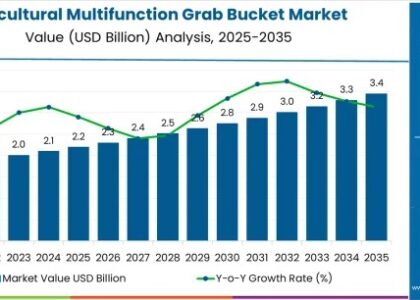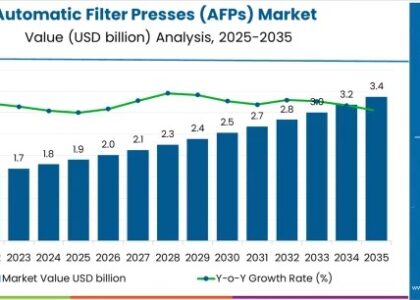The on-shelf availability solution market is expected to be USD 6.2 billion in 2025 and to reach a total of USD 16.3 billion by 2035. Retail sales should increase at a CAGR of 10.1% over the outlook period from 2025 to 2035. On-Shelf Availability Solution had gross sales of USD 5.6 billion by 2024. The year 2025 shows a market growth of 9.2%.
In a world where consumers demand instant access, zero wait times, and seamless shopping experiences, the stakes for retailers have never been higher. Yet, one of the most persistent—and costly—challenges remains surprisingly basic: keeping shelves stocked. That’s where On-shelf Availability (OSA) solutions come in—quietly transforming retail operations by ensuring the right products are in the right place at the right time.
Driven by advancements in data analytics, AI, and real-time monitoring, OSA solutions are helping retailers bridge the gap between supply chains and in-store execution. In an increasingly omnichannel landscape, they’re becoming essential tools for maximizing sales, enhancing customer satisfaction, and gaining a competitive edge.
Request Your Sample and Stay Ahead with Our Insightful Report!
https://www.futuremarketinsights.com/reports/sample/rep-gb-759
More Than Just Stockouts: Understanding On-shelf Availability
On-shelf availability refers to the visibility and physical presence of products on store shelves at the moment a customer is ready to buy. When items are missing—due to delays, misplaced inventory, or inaccurate data—retailers risk more than lost sales. They face damaged brand loyalty, lower basket sizes, and potential supply chain inefficiencies.
OSA solutions tackle this issue head-on by using a combination of technologies—such as shelf sensors, image recognition, POS analytics, and RFID tracking—to detect out-of-stocks, monitor planogram compliance, and trigger timely replenishment. These systems give retailers the real-time intelligence needed to act fast and keep shelves customer-ready.
Digitizing the Shelf: Where Technology Meets Execution
Modern OSA platforms integrate AI-powered image recognition and machine learning to scan shelves, interpret product positioning, and identify gaps. Whether via fixed cameras, smart shelves, or mobile apps used by store associates, these tools turn physical shelf conditions into actionable insights.
In parallel, predictive analytics forecast future stockouts based on sales trends, delivery schedules, and local demand fluctuations—allowing proactive inventory planning. Integration with ERP and inventory management systems ensures that insights translate into swift execution.

From Store Aisles to Supply Chains: A Holistic View
OSA is not just a store-level problem—it’s a supply chain visibility challenge. The most effective solutions connect the dots from supplier to shelf, enabling end-to-end monitoring of product movement, availability, and shelf performance.
By aligning upstream logistics with downstream demand, these solutions help reduce excess inventory, minimize returns, and improve collaboration across suppliers, distributors, and retail outlets. For large-scale retailers, the ability to measure availability in real-time across thousands of SKUs and locations is a game changer.
Supporting Omnichannel Agility
As retailers increasingly blur the lines between physical and digital shopping, on-shelf availability becomes even more critical. Customers ordering online for in-store pickup or same-day delivery expect accurate inventory and immediate fulfillment. Any mismatch between digital stock and physical reality can result in cancellations, delays, and eroded trust.
OSA solutions provide the accuracy needed to support services like click-and-collect, ship-from-store, and BOPIS (buy online, pick up in store), ensuring that inventory data reflects actual shelf conditions. This helps retailers deliver consistent and reliable omnichannel experiences.
Challenges in Data, Integration, and Scalability
Despite their advantages, implementing OSA solutions can be complex. Integration with legacy systems, data standardization across stores, and staff adoption all present challenges. Additionally, balancing cost with ROI remains a key consideration, especially for smaller retailers operating on tight margins.
Scalability and customization are also critical. Each retail format—be it grocery, apparel, or electronics—has unique shelf dynamics, replenishment cycles, and customer behaviors. OSA providers must tailor solutions that meet both technical and operational needs.
Thorough Market Evaluation: Full Report
https://www.futuremarketinsights.com/reports/on-shelf-availability-solution-market
A Strategic Asset in Competitive Retailing
Retail is a margin-sensitive, detail-driven industry. Even small improvements in product availability can yield significant revenue gains and operational efficiencies. That’s why OSA solutions are being recognized not just as operational tools, but as strategic investments.
Beyond preventing empty shelves, they offer insights into shopper behavior, store execution, and promotional effectiveness—empowering smarter merchandising, better supplier negotiations, and more responsive supply chains.
Invisible to Shoppers, Indispensable to Retailers
On-shelf availability might not be something the average shopper thinks about—but they notice when it’s missing. Behind the scenes, retailers are deploying powerful technologies to ensure those shelves stay full, relevant, and ready.
As retail continues to evolve at high speed, OSA solutions are helping brands stay a step ahead—combining precision, automation, and visibility to keep the shopping experience seamless. Quietly operating in the background, they’re redefining retail readiness—one shelf at a time.






